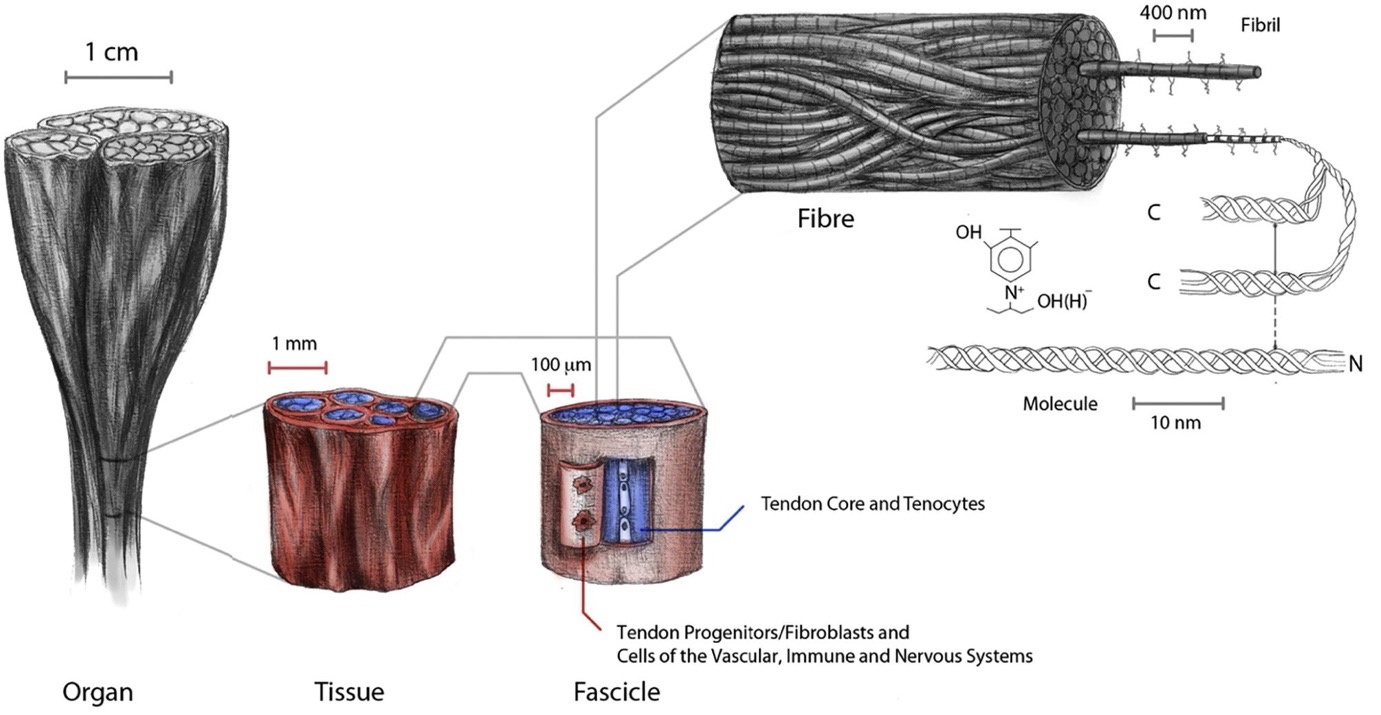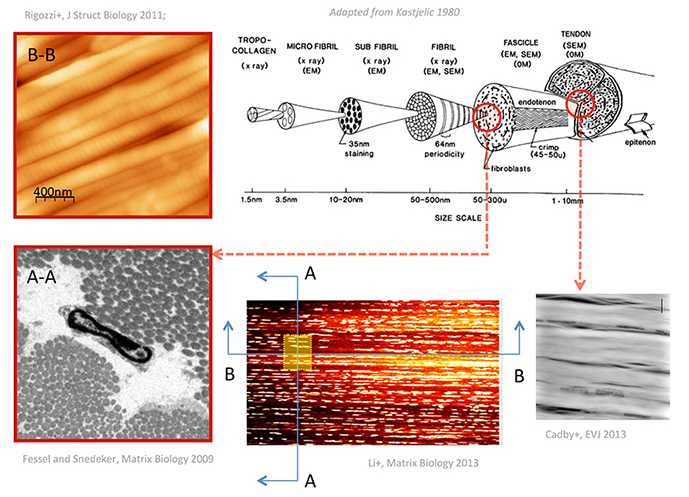Tendon Mechanobiology
Tendons transfering muscle forces are exposed to the highest mechanical stresses in the human body. How does the structure and biology of tendon enable this?
Hierarchical organization of load bearing collagen structures enable tendon function
Tendon is designed by Nature to transfer high muscle forces across our joints, often through very tight anatomical spaces. This can require tendon tissues to bear exceptionally high mechanical stress. Tendon injury is common, and recovery from tendon injury is often challenging.

A multi-scale approach
We employ experimental approaches across size scales, aiming to connect tissue-level forces, to matrix-level deformations, to biological cellular response. We perform human-level imaging (ultrasound, endoscopy, MRI), cellular-level imaging (advanced microscopy methods), and molecular-level imaging of matrix structures and their deformations under load (x-ray scattering, electron microscopy, atomic force microscopy).
Discovering mechanotransducers and defining the mechanical stimulii that trigger them
Tendon tissue remodeling is driven by cell-level mechanical stresses and resulting deformations (in the matrix). Stresses include shear stresses from fluid flow and fascicle sliding, tensile stresses from direct elongation of collagen structures and hydrostatic stresses from the volumetric changes with external loading.

